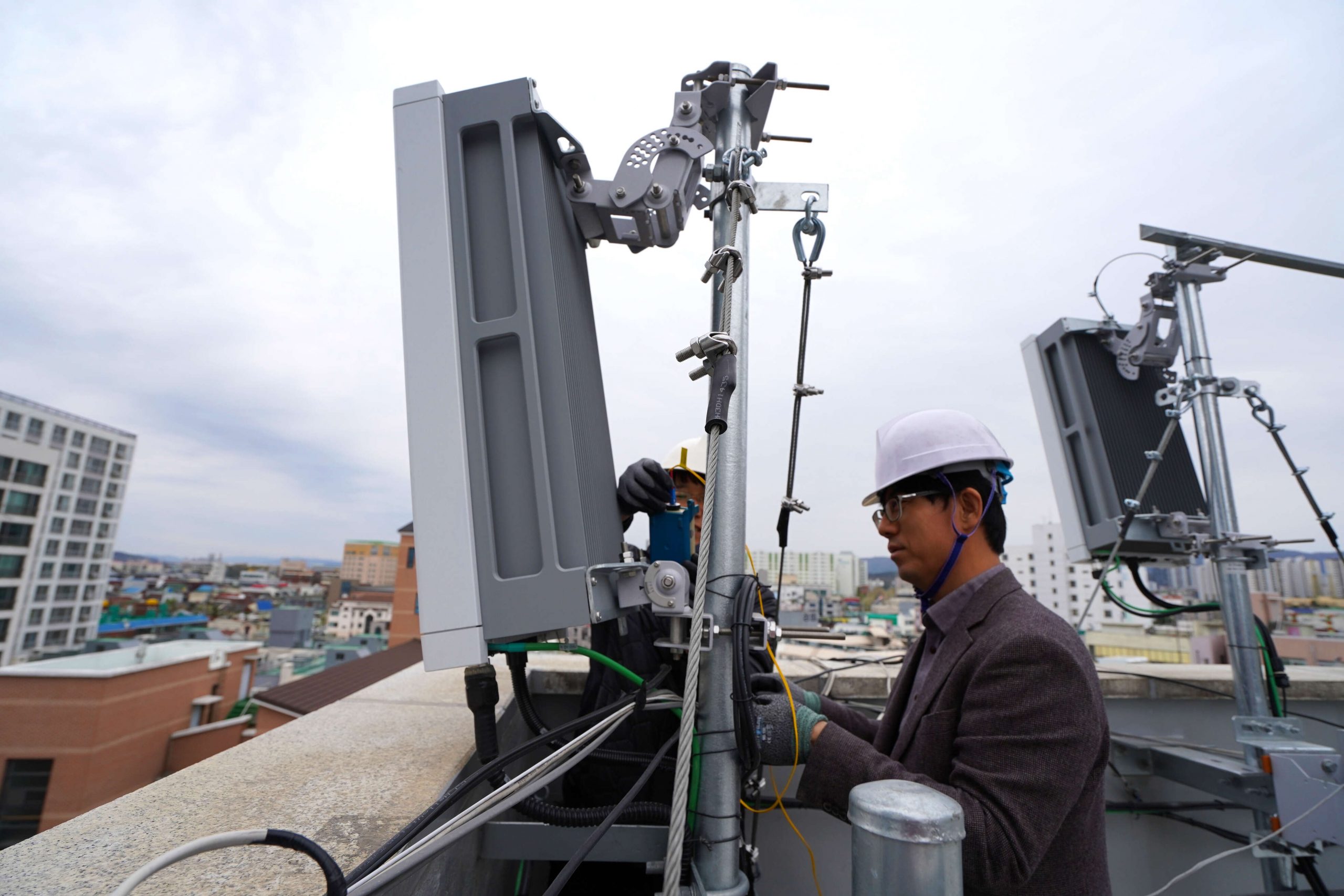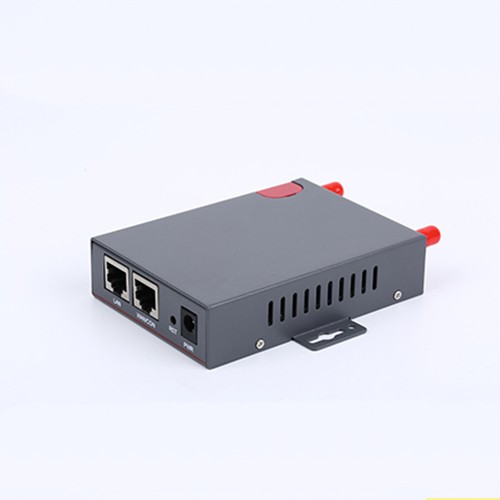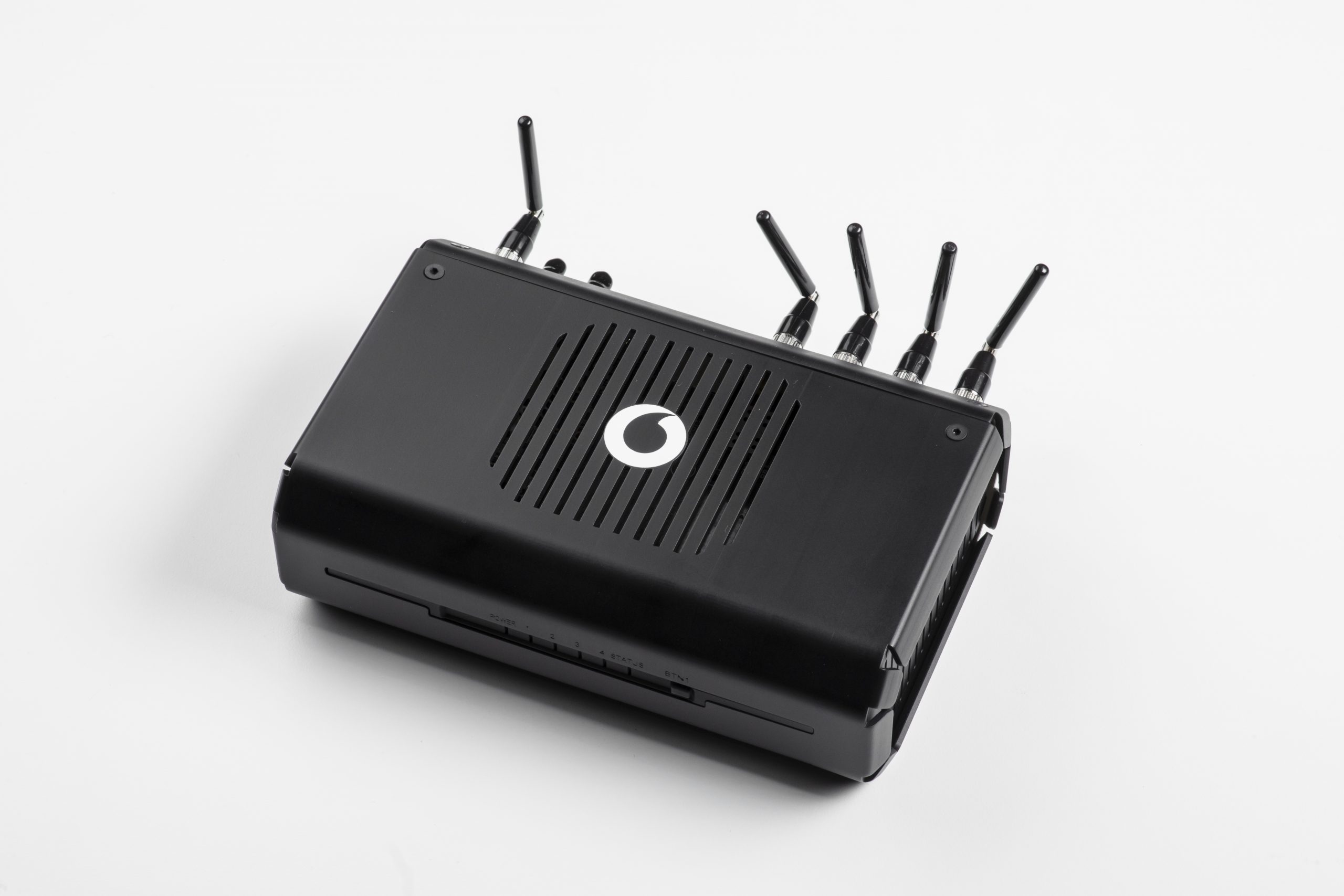In more and more cities and regions, the 5G mobile communications standard is available to consumers, and the German industry’s investment in the fifth-generation wireless network is also on the rise. The latest study by the digital association Bitkom clearly shows: 85 percent of manufacturing companies in Germany consider the availability of 5G to be important, with 52 percent even attesting to its very high importance. One thing is certain: 5G technology is paving the way for Industry 4.0, enabling increasing automation in smart factories and thus opening up new options for numerous production processes. It allows companies to further flexibility while decentralizing and individualizing their production as required.
The increasing demand for autonomous mobile robots (AMR) in the context of Industry 4.0 is no coincidence. The reason: Manufacturing companies are increasingly confronted with short product life cycles, complex workflows, and tight margins. At the same time, they need to accelerate their manufacturing processes and ensure high product quality. The new mobile communications standard can contribute to the solution here because it enables advanced routing of mobile robots in intra-logistics. Among other things, it further advances the preventive maintenance of AMR and accelerates their commissioning.
More functionality for AMR
Until now, companies have primarily used WLAN for AMR. But the greater bandwidth of 5G enables companies to transmit and analyze large volumes of data and to handle computationally intensive processes via the cloud. So for Autonomous Mobile Robots or their compute-intensive processes, the limiting element is no longer the integrated computing unit, but the bandwidth and speed of the connection to the cloud. Autonomous material transport requires both high-performance and secure connectivity, as well as robust and reliable software to control the systems.
Overall, the advantages of 5G are so diverse that the technology could become the standard for industrial communications infrastructure in the future. Although German industry has recognized the advantages, the communication standard has yet to be established across the board in companies. According to a recent study, less than a third of companies are already using the standard in production, while 42 percent are planning or discussing its use.
5G outshines conventional Wi-Fi
Unlike wireless LAN, which operates on an open spectrum, 5G is a spectrum-licensed technology. Companies can either set up their own scaled 5G network locally at one site or work with a mobile network provider that reserves parts of the public network for a specific end user. By eliminating the need for local servers, costs can be saved and efficiency increased. Further, 5G can be easier to deploy than WLAN while providing greater coverage and capacity. For reasons of security, performance, and reliability, the private wireless network route is more suitable for most industrial applications.
AMR needs connectivity and bandwidth
To ensure efficient processes and operations, it is critical that the AMR receives the right job at the right time, performs the task at the expected time, and coordinates well with other AMRs and site conditions. High-speed and reliable connectivity are essential to this. Industry leaders in AMR and 5G mobile, such as MiR and Nokia, are working together to expand the coordinated use of these technologies in the field. For example, the Denmark-based manufacturer’s AMR can already take full advantage of Nokia’s Digital Automation Cloud (DAC).
Small AMR fleets can be well served with WLAN. However, as size, functionality and load increase, it is usually time for a dedicated network solution for these mission-critical applications. Successful and scalable AMR deployments require predictable network performance. This is the only way to improve overall equipment effectiveness (OEE) and achieve a faster ROI.
Although much of the current AMR is compatible with WLAN, there are numerous reasons why 5G connectivity in the field will boost AMR performance. When AMR are implemented over existing WLAN systems already in use for business and other IIoT purposes, it limits network performance as well as real-time functionality. Other newer AMR features also increase the need for greater bandwidth and better response times. These include, for example, deeper application automation of semi- to fully-automated intralogistics processes and interoperability between different AMR systems
Real-time computing as a novelty
For AMR, the required latency between the robot and the fleet manager is generally less than 100 milliseconds. While there are some existing technologies that can do this, none can simultaneously deliver all the other benefits of 5G. The new cellular standard achieves transmission speeds of up to 10 gigabits per second and, for the first time in the history of the industry, enables information to be transmitted in near real time to support critical application.
The significant speed increase combined with low latency times of one millisecond forms the basis for a modern ecosystem that enables comprehensive networking of smart devices and machines and opens up completely new applications in the IIoT sector. By transmitting data in real time, companies can increase the efficiency of their processes in warehousing and production while reducing errors and waste.
A typical scenario for the benefits of real-time communication in logistics lies in the increasing importance of interoperability between AMRs from different manufacturers and other forms of automated vehicles. Direct and delay-free communication simplifies the use of cloud-based interfaces to connect different AMR and efficiently manage traffic.
IIoT and AMR applications help compete
There’s no question about it: companies in the manufacturing and logistics sector are facing tight margins, competitive pressure, a shortage of skilled workers – exacerbated by demographic change – and changing customer demands. They are increasingly relying on new technologies and innovations to achieve competitive advantages. According to a recent study, companies are planning to use 5G more in the future. One-fifth (21 percent), for example, intend to use 5G exclusively as a radio standard by 2025, compared with only five percent currently.
Combining AMR with 5G networks not only optimizes existing processes, but also opens up completely new business opportunities. Implementing fully automated factories using the latest technologies such as 5G should be part of a strategy to create a more resilient and sustainable global supply chain.
5G private mobile networks can provide high bandwidth, reliable low-latency connectivity, and advanced IoT capabilities in industrial environments to meet the needs of current and future AMR deployments. 5G is becoming mainstream in commercial use and offers multiple integration opportunities in industrial environments. MiR, a leader in AMR, is working with its partners to provide field-proven solutions.









Leave A Comment